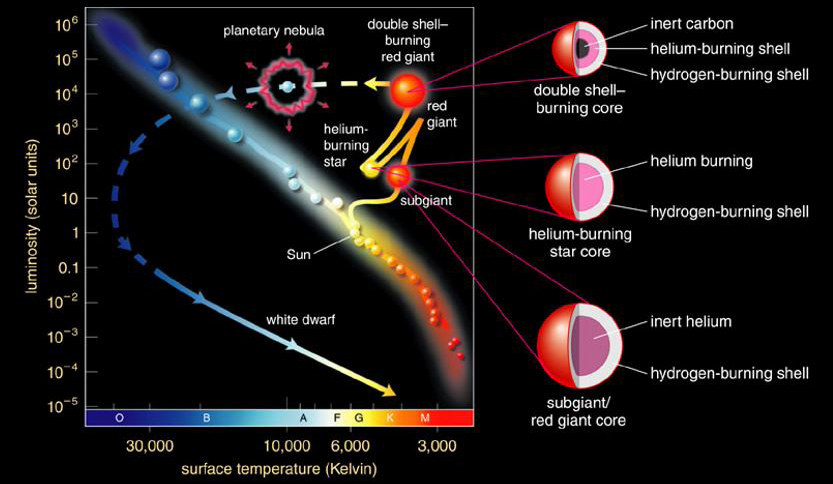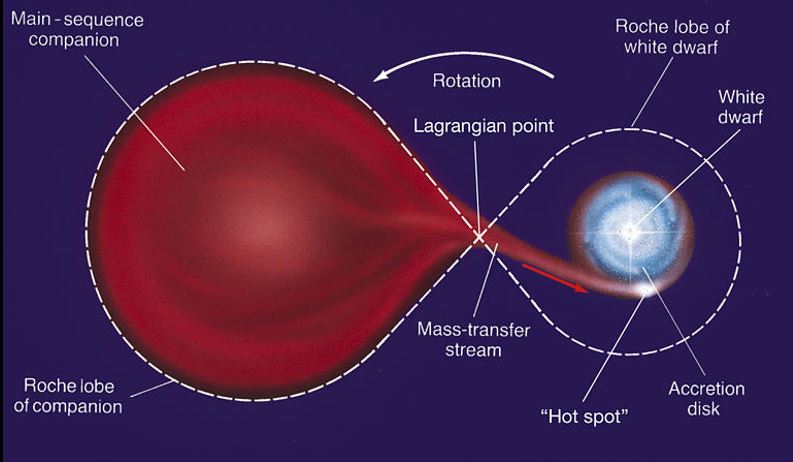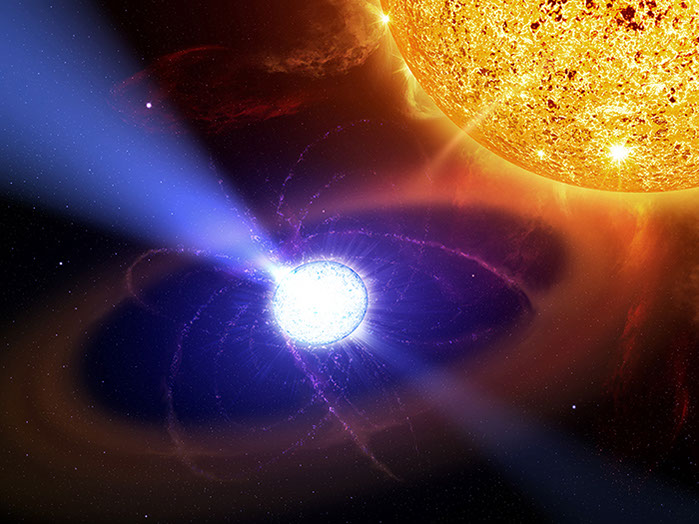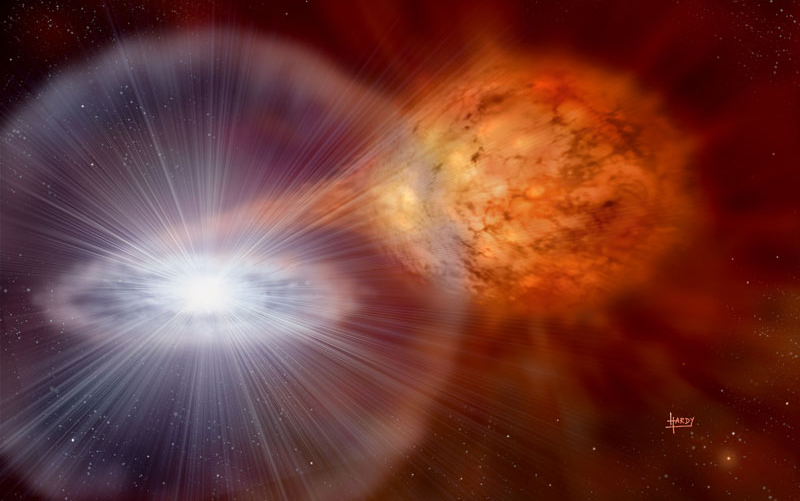
Stellar explosions
- Novae
- Massive star evolution
- Supernovae
The Crab Nebula, seen from Earth in the year 1050 AD, is an example of the remnants of such an explosion. This composite image contains data from three space telescopes. The x-ray image from Chandra, in blue, shows the plasma disk surrounding the neutron star that is the core of the exploded star. The visible light from Hubble is shown in red and yellow, while the infrared light from Spitzer is shown in purple.

Recall that when a sunlike star begins hydrogen shell fusion, it leaves the main sequence, becoming a subgiant, then a red giant. This is followed by the outer part of the star ejected into space, becoming a planetary nebula, while the core becomes a white dwarf star. On the HR diagram, the white dwarf lowers considerably in luminosity but retains a high temperature. As time goes on, the white dwarf cools off.

© 2005 Pearson Prentice Hall, Inc
If the white dwarf has a nearby binary partner, when the partner star swells up in its red giant phase, it may fill up its Roche lobe (the region where its gravity dominates) and some of the diffuse outer matter may be gravitationally attracted toward the white dwarf. The matter streams toward the white dwarf, forming an accretion disk around it.

This artist's rendition of a white dwarf/red giant binary pair shows matter streaming from the red giant to the white dwarf. Charged particles tend to spiral along magnetic field lines, so the magnetic field of the white dwarf can channel energetic particles out along the field lines at the poles of the star.

A white dwarf is the leftover core of a sunlike star, with no fusion happening. But when the hydrogen gas from the accretion disk flows onto the white dwarf and builds up, over time there can be enough hydrogen on the surface of the white dwarf for it to ignite and fuse. When this happens, there is a bright explosion called a nova. The fusion will last for a relatively short time, after which the hydrogen builds up again. Novae can happen repeatedly as the hydrogen continues to flow onto the white dwarf.
Electron degeneracy pressure is the main mechanism in a white dwarf resisting the inward pull of gravity. As the repeated nova events on the white dwarf happen, fused matter continues to add mass to the white dwarf. If the mass builds up to where the pull of gravity is stronger than the electron degeneracy pressure can withstand, the white dwarf star will reach critical mass, called the Chandrasekhar limit. If the white dwarf reaches this limiting mass, it explodes in a type 1a supernova event. Since the mass limit is the same for all white dwarfs, the luminosity of this cataclysmic explosion is about the same for all type 1a supernovae, rendering them important as standard candles. There are other characteristics of white dwarfs which would affect the mass limit needed for explosion, such as rotation speed and magnetic field strength, but it is not well understood exactly how these mechanisms would affect the luminosity of the supernova event.
Novae and Type Ia supernovae
-
Nova
- Starts with a white dwarf in a binary system with a red giant
- White dwarf accretes matter from the red giant
- Accreted matter builds up and heats up enough for fusion
- May be repeated
-
Type Ia supernova
- Starts with same situation as a nova (above)
- White dwarf builds up more mass over time
- Mass exceeds the Chandrasekhar limit
- Gravity overtakes electron degeneracy pressure
- Core collapses and heats up
- Carbon fusion begins and detonates star
This simulation shows what it might look like to see a white dwarf reach the Chandrasekhar limit and explode in a Type 1a supernova event. The remnants of the event only include the matter expanding out into space, no core remains after the explosion.
In this section, we will focus on stellar explosions that occur in the late stages of life of massive stars, beginning with nova explosions involving white dwarf stars in binary systems. We will then look at how massive stars undergo evolution similar to that of sunlike stars, followed by core and shell fusion of increasingly heavier elements, ending in supernovae. We will also study the differences between Type I and Type II supernovae, and their signatures.